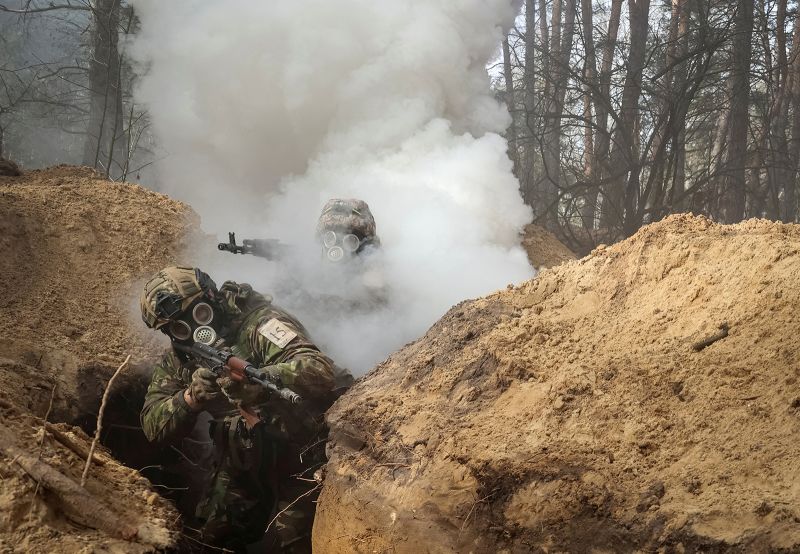The United States has formally accused Russia of using chemical weapons “as a method of warfare” against Ukraine and imposed sweeping new sanctions on Russian firms and government bodies.
In a statement on Wednesday, the US State Department said it had “made a determination … that Russia has used the chemical weapon chloropicrin against Ukrainian forces in violation of the Chemical Weapons Convention (CWC).”
It added that Russia had also used “riot control agents,” or tear gas, during the war in violation of the CWC.
“The use of such chemicals is not an isolated incident, and is probably driven by Russian forces’ desire to dislodge Ukrainian forces from fortified positions and achieve tactical gains on the battlefield,” it said.
The US conclusion tallies with testimony from Ukrainian troops who say they have faced increased encounters with gas and other irritant chemicals on parts of their frontline with Russia’s forces in recent months.
In a statement posted on social media in March, Ukraine’s armed forces said they had recorded more than a thousand incidents where Russia had used “tear gas munitions equipped with toxic chemicals that are prohibited for warfare,” with 250 cases in February alone.
The Kremlin dismissed the US accusations. Asked about them during a regular press briefing, Kremlin spokesperson Dmitry Peskov said: “We saw the news about this. These accusations are absolutely groundless, not supported by anything. Russia was and remains committed to its obligations in international law.”
Chloropicrin was widely used as a chemical warfare agent in World War I, but is no longer authorized for military use, and is now mostly used in agriculture, according to the CDC. It irritates the lungs, eyes, and skin, and can cause nausea, vomiting and diarrhea lasting for weeks, according to the CDC.
Under a 1991 law against the use of chemical and biological warfare, the State Department is “re-imposing restrictions on foreign military financing, US Government lines of credit, and export licenses for defense articles and national security-sensitive items going to Russia,” it said on Wednesday.
It added that it is sanctioning three Russian government entities linked to the country’s chemical and biological weapons programs and four Russian companies that contributed to those government bodies.
The announcement was part of a tranche of nearly 300 new sanctions against companies and figures in multiple countries for their support of Russia’s war in Ukraine, including China, Azerbaijan, Belgium, Slovakia, Turkey and the United Arab Emirates.
The US has previously warned Russia against chemical warfare in Ukraine; in March 2022, a month after the invasion began, President Joe Biden said that NATO would respond if Russia used chemical weapons in Ukraine.
And last April at a G7 summit, the foreign ministers of member nations said in a joint statement that Russia would be met with “severe consequences” for any use of chemical, biological or nuclear weapons.
Since then, US officials have warned of signs that Russia has done so anyway. In November, Mallory Stewart, the US assistant state secretary for arms control, deterrence, and stability, cited reports by Ukraine that Moscow was using riot control agents in the war.
The use of chemical weapons is banned by international law. Russia has signed those treaties and claims it doesn’t have chemical weapons, but the country has already been linked to the use of nerve agents against critics in recent years.
Those cases include the poisonings of Sergei Skripal and Alexey Navalny – the latter of whom died in February while jailed in a a penal colony in Siberia. The 47-year-old fierce critic of Russian President Vladimir Putin had fallen unconscious after taking a walk, according to the Russian prison service; the cause of his death is unclear.
On Wednesday, the State Department said it would also impose new sanctions on three individuals linked to Navalny’s death: the director of the prison where Navalny was imprisoned; the head of solitary confinement who oversaw Navalny’s cell, as well as the walking yard where he allegedly collapsed and died; and the prison’s medical chief.
